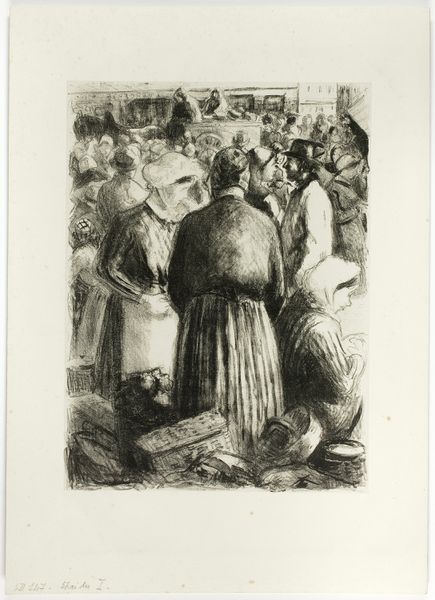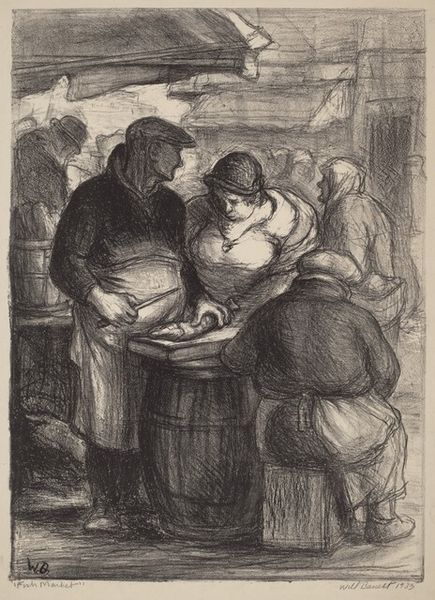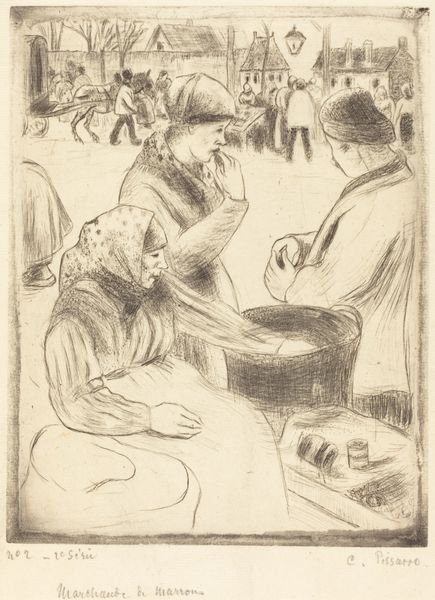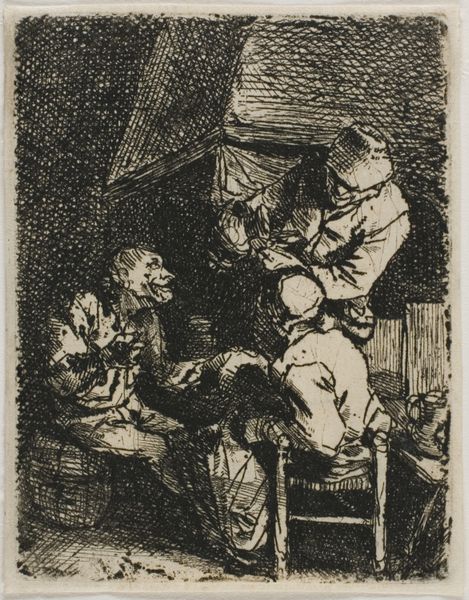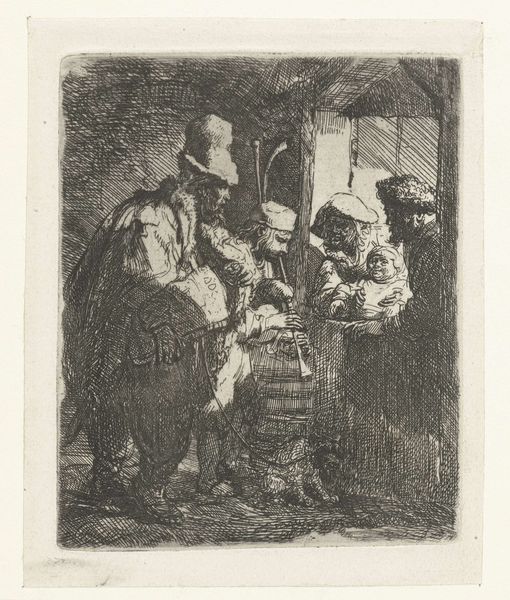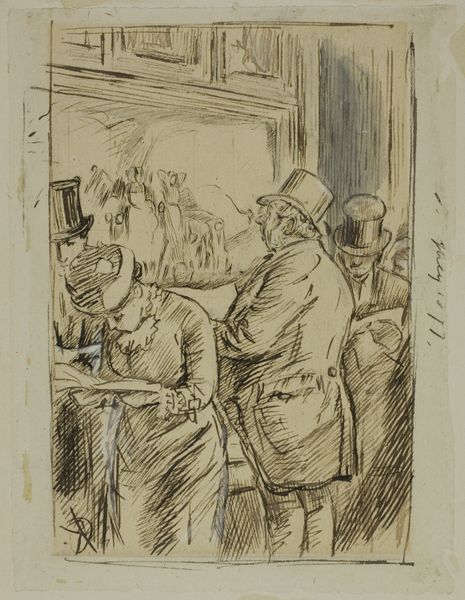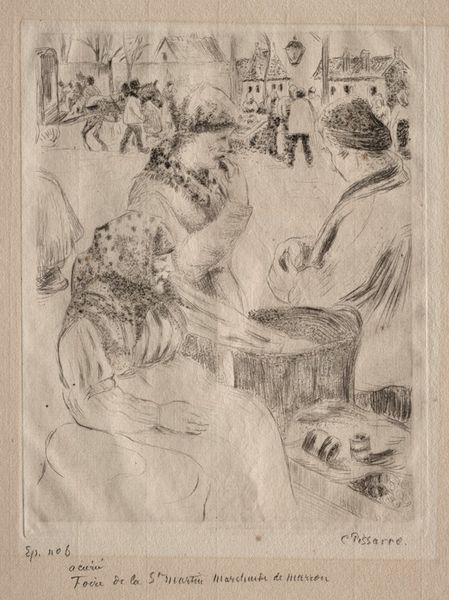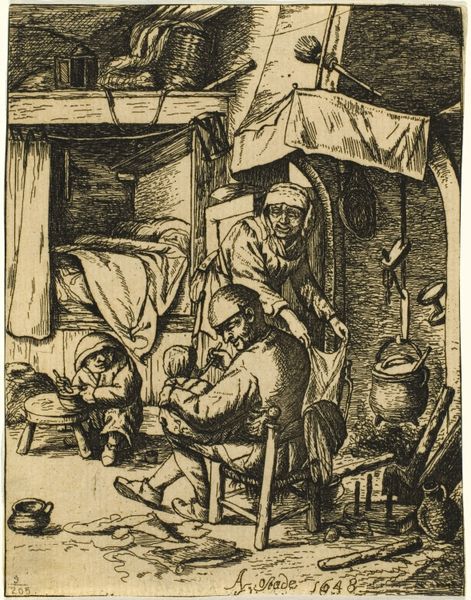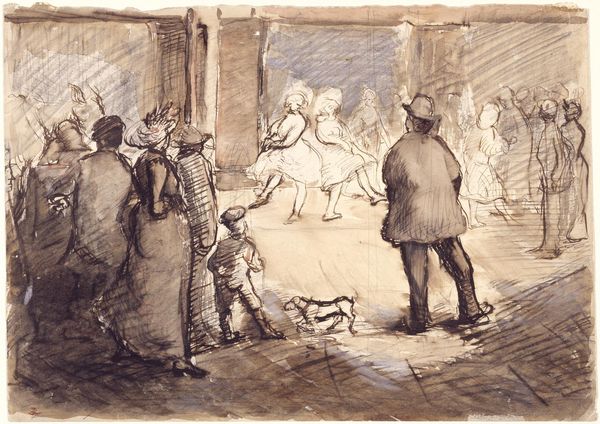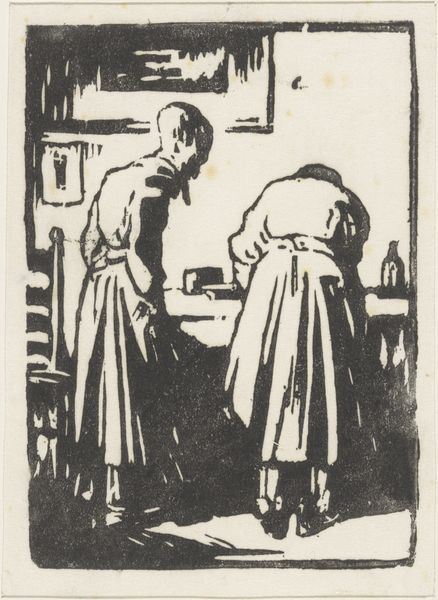
Vegetable Market at Pontoise (Marche aux legumes a Pontoise) 1891
Dimensions: plate: 25.5 x 20.1 cm (10 1/16 x 7 15/16 in.) sheet: 39 x 29 cm (15 3/8 x 11 7/16 in.)
Copyright: National Gallery of Art: CC0 1.0
Editor: Here we have Camille Pissarro's "Vegetable Market at Pontoise," made in 1891, an etching. There’s such a sense of everyday life captured here; I’m really drawn to the bustling scene, the figures seemingly absorbed in their tasks. What do you see in this piece? Curator: Well, understanding the historical context is key. Pissarro often depicted scenes of rural and working-class life, reflecting his anarchist sympathies and interest in representing the everyday reality of ordinary people. It's not just a quaint scene; it's a socio-political statement about labor and community. Consider how this image, a print, might be circulated. Who might have purchased it, and what understanding did they have of it? Editor: So, it's less about capturing a pretty landscape, and more about showing a slice of life, maybe with a subtle political edge? Curator: Precisely! Think about the implications of depicting the market. It's a site of exchange, a meeting place for different social classes. It shows us the economy of rural France and who is actively involved in it. Notice the detail given to the figures actively involved in selling their produce. Pissarro isn't idealizing rural life; he is grounding it in a very material, visible reality. Does this perspective shift your understanding? Editor: It definitely does. I initially saw the visual aspects—the composition, the technique of etching to capture the busyness—but knowing about Pissarro’s politics really reframes how I interpret the figures and the scene itself. It becomes more charged, more about representation and social commentary. Curator: Exactly. And recognizing that gives you a richer, more nuanced appreciation of his work. It also provides an avenue for critiquing whose realities are considered and who gets to participate. Editor: I hadn't really thought about art as a tool for documenting or even shaping those narratives. That's such a powerful way to look at it. Curator: Seeing art within its historical and social contexts unlocks so much meaning, doesn't it? It moves beyond personal impressions and connects us to broader conversations about society and culture.
Comments
No comments
Be the first to comment and join the conversation on the ultimate creative platform.

